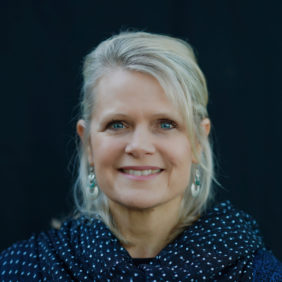All businesses today operate within one or more recognizable ecosystems. Ecosystems look like patterns of regular exchanges between individuals and organizations through which they acquire new customers (lead generation), generate revenue (selling products and services), and reduce their operating expenses (outsourcing, automation, and fractional work arrangements). Exchanges can be information-based, currency-based, or relational. All three types of exchanges can be valuable contributors to your business’s success.
Historically, our business ecosystems were smaller and their members a lot more homogenous than they are today. The breadth and depth of disruptive, VUCA-style change that we have been experiencing since early 2020 due to both the global COVID-19 pandemic and racial reckoning movement have fundamentally altered many business ecosystems in three key ways, through:
- Localization
- Diversification
- Brand alignment
Localization
I witnessed many people during COVID-19 “get community” for the first time. Because they were forced to spend long hours at home and unable to travel, some started to pay more attention to the needs of their local communities and experienced a stronger desire to support struggling local businesses, like their favorite restaurant or barber. And, as international supply chains were disrupted, many companies responded by looking to source more components closer to home. According to a recent survey conducted by McKinsey & Company, 93% of supply-chain leaders are working to increase the level of resilience across their supply chain. Their approaches to doing so include dual sourcing of raw materials, increasing inventories, near-shoring, or regionalizing their supply chains.
Diversification
Many business and organizational leaders are starting to recognize the benefits of diversifying their network of partners and providers. Moving away from single-source suppliers and seeking to curate a range of suppliers instead provides an additional hedge against risk and has the added benefit of generating perceived goodwill in the form of better corporate citizenship.
Diversification of suppliers correlates strongly with diversification of leaders’ personal networks. We tend to reach out to people like us, and it requires sustained effort and intention to reach out to people holding different identities and invite them to do business with us. It takes time to build real connection and trust, and to understand what exchanges have the most value for people whose life experiences may be very different from ours.
When I was finishing the manuscript for my book, Learn Lead Lift: How to Think, Act and Inspire Your Way to Greatness, I was very intentional about reaching out to and hiring people of color to support the project. Through that intention, I found a wonderful and talented editor and an amazing PR team—all of whom are black. Had I not been purposeful in asking people of color I knew to refer me to people they knew and I didn’t, I wouldn’t have found them.
Brand alignment
Once upon a time, you could choose to quietly do business with companies whose practices were not aligned with your own values. This is far less true today. Thanks to social media, if you choose to continue doing business with a long-time partner who is publicly regarded as being culturally incompetent or out of touch with social justice-related issues, your brand and reputation will take a hit.
The days when you as a business owner could take a neutral position on politics, religion, the environment, race relations, or a host of other hot button issues are long past. According to this new study from Porter Novelli, two-thirds (66%) of Americans believe companies have a role to play in addressing social justice issues and 59% expect them to go further by taking the lead. Finally, 61% of Americans said they would actively reward companies that actively address social justice issues. And when you share your point of view on any of these issues, it impacts other members of your ecosystem—for better or worse.
In some cases, you may be “uninvited” to continue participating in that ecosystem. It’s happened to me and to Kadabra, and it does not feel good. The good news is that you will likely receive new invitations to join other ecosystems that do align with your company’s values and brand.
Change is hard in the short term, especially when you are letting go of relationships that may have taken you years to build. And it can be wonderful, too, as you discover that your new ecosystem partners bring fresh insights, energy, and connections to your exchanges that ultimately can invigorate you and your business.
If you are looking for ways to evolve your business ecosystem, we want to help. Contact hello@wearekadabra.com to schedule a discovery call with one of our team members.


 Heather Leavitt-Martinez (she/her/hers) – Senior Product Manager
Heather Leavitt-Martinez (she/her/hers) – Senior Product Manager Wendy Ryan (she/her/hers) – CEO
Wendy Ryan (she/her/hers) – CEO Shawn Bunger (she/her/hers) – Senior Consultant
Shawn Bunger (she/her/hers) – Senior Consultant Crystal Whiteaker (she/her/hers) – Senior Consultant
Crystal Whiteaker (she/her/hers) – Senior Consultant Gail Finger (she/her/hers) – Senior Consultant
Gail Finger (she/her/hers) – Senior Consultant Monica Silkwood (she/her/hers) – Director of Operations and Experience
Monica Silkwood (she/her/hers) – Director of Operations and Experience Johanna Lyman (she/her or they/them) Senior Consultant
Johanna Lyman (she/her or they/them) Senior Consultant Sherri Horan (she/her/hers) – Senior Consultant
Sherri Horan (she/her/hers) – Senior Consultant